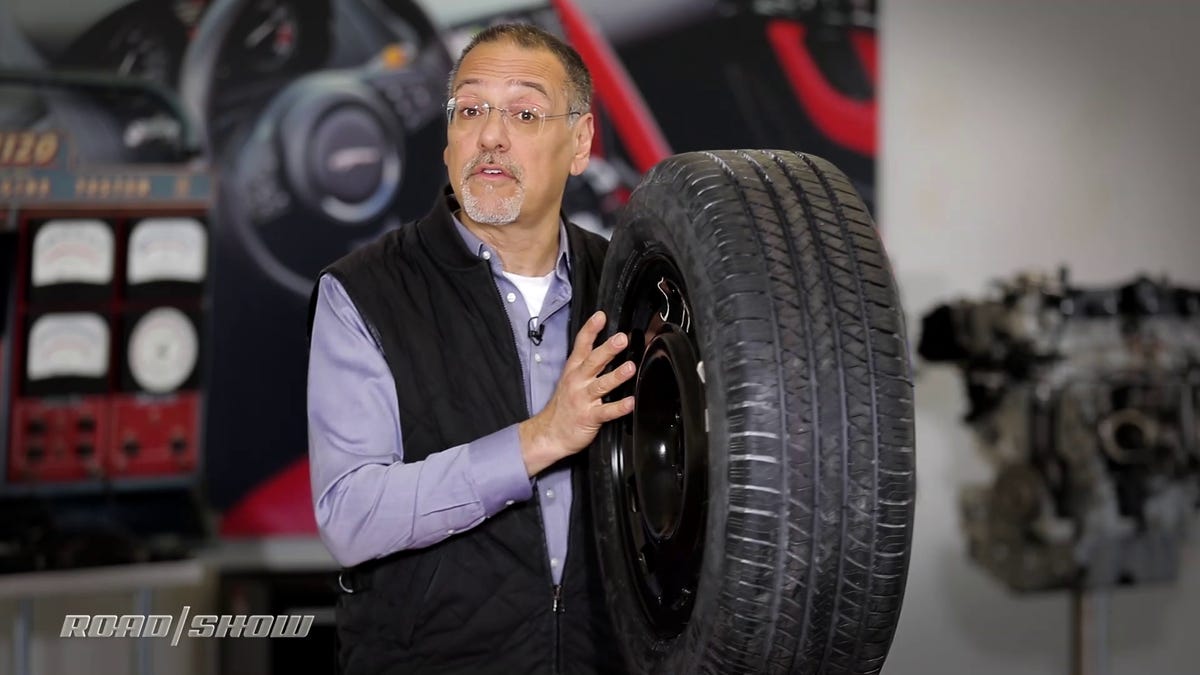Why does my car need new tires already?
If your car is almost new, that could be the reason you need tires.

If you have a recent Ford Explorer with Hankook Noble S1 tires, you may sympathize with CNET viewer Kevin B. in Dallas, TX, who wrote to me complaining:
"Our new 2018 Ford Explorer Limited needed new tires with only 16,300 on the odometer. Upon looking online, it seems it's a very prevalent problem with the original Hankook Noble S1 tires. Why wouldn't Hankook release a letter to owners?"
The short answer is that a defective tire and a lousy tire are two very different things. You could get 5,000 miles on a set of tires and not have a claim. Ford's warranty on tires, like that of all carmakers, covers defects but not wear or road hazards no matter how briefly the tires last.
Ford's tire warranty makes a standard industry distinction between wear and defects.
New car warranties also link to a separate warranty from the tire maker that similarly shrugs its shoulders.
I've heard of people arguing with the dealer for a pro-rata credit against a new set of tires purchased from and installed by the dealer, but I don't think 16,300 miles is going to qualify. I've had cars that routinely got 8,000 miles on a set of tires and nobody blinked an eye (except me, dumping the car when it was ready for its third set of tires).
It has long been practice to put crummy tires on new cars unless they are premium performance models. Do a search on eBay and you'll find a whole category of tires and wheels described as "take offs." These are tires, and sometimes wheels, that people take off their new car immediately to get something better at their own cost.
Now that I have your attention about making tires last, here's the shortest tutorial I can devise:
Rotation
Tires on a car don't wear at the same rate. The fronts wear faster than the rears, the right rear often wears faster than the left rear. Moving them around the car as specified in your manual evens out the wear across all four.
Curb weight
Once you buy a car you can't do anything about this, but a heavy vehicle wears tires faster than a light one. A new Ford Explorer weighs around 4,500 pounds, which is quite a bit.
The 2018 Ford Explorer's 4,500 pounds aren't just applied vertically to the tires, but also laterally every time the car turns.
Torque
Today's powertrains pass an amazing amount of torque, or twisting force, to the tires. That shreds them slightly every time you accelerate, not just if you burn rubber. Go easy to spend less.
Braking
Braking grinds tires against the pavement in the opposite direction as torque. On most cars around 70 percent of braking is done at the front tires, another reason to do rotation.
Suspension design
You can't know or control this, but every car's suspension moves its tires through space in a different way as the car bounces down the road and around turns. Some cars just grind up tires.
Hankook, like other tire manufacturers, washes its hands of tires that were not kept in proper alignment and inflation.
Toe angle
If a tire's toe angle is off, it will be either pigeon-toed or duck-footed as it goes down the road. That causes the tire to not only roll down the road, but to also scrape down the road slightly sideways, taking rubber with it.
Camber
If camber is set wrong, it means the tires will typically squat, wearing out the inside edge of the tread a lot faster than the outside edge that you see. This can be a sneaky form of tire wear and a nasty surprise when your car is up on the rack for a routine check.
Terrain
Driving in town usually means a lot more turns, stops and maybe hills. People who drive out in the open road often get more miles from a set of tires, asking little of their tires other than to roll straight down the road.
Driving style
Do you love the feel of your car's crisp acceleration and sharp braking? Get your wallet out: Highly dynamic driving scrubs off excess rubber.
Tire pressure
You're sick of being told to check your tire pressure, so I won't belabor it, but it's a big deal for tire wear and especially for even tire wear. All new US cars sold since 2008 have a Tire Pressure Monitoring System that shows an idiot light or numerical display on the dash when your tires are low, but it only has to do that when you are 25 percent or more under inflated. That's too late for good tire wear management. Get a tire gauge, and get down on the driveway every few months.
Wheel size
If you have a car with cool looking big wheels and short-height low-profile tires, you may be limited to using tires that have relatively soft, sticky tread. Many of the longer wearing tires are made only in dorky, old-style sizes. Rolling on 40s has its price.
Tire specs
You may say "wait a minute, I want the mileage my tire said it would deliver by its treadwear rating." Tires do have specs on their sidewalls but they tell you less than you'd like.
Treadwear ratings: If only they meant as much as you think they do.
The "Treadwear" rating stamped on the tire is merely relative to other tires made by that manufacturer, not a specific mileage prediction. A treadwear rating of 400 should mean about twice the life of a tire rated as 200, but it's a vague estimate.

